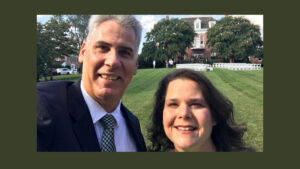
WASHINGTON (BP)–The number of people who committed suicide legally with a doctor’s help increased again last year in Oregon, according to an annual report, and foes of assisted suicide criticized the lack of information that continues to exist on the practice.
Forty-two people used drugs prescribed by physicians to kill themselves in 2003, the Oregon Department of Human Services reported. In 2002, 38 people died by means of assisted suicide.
The total was the largest number of assisted suicides since Oregon’s Death With Dignity Act took effect in late 1997. Oregon remains the only state to legalize physician-aided suicide.
The report, which was released March 10, also showed:
— The number of prescriptions for lethal drugs increased from 58 in 2002 to 67 in 2003.
— The physicians who prescribed the drugs and were present when patients took them decreased from an average of 47 percent in the previous five years to 29 percent in 2003.
— The percentage of patients who received a psychological evaluation continued to decline — from 31 percent in 1998 to 5 percent in 2003.
— The primary reasons patients chose to kill themselves were concerns about a decrease in autonomy, an increasing inability to participate in enjoyable activities and a loss of dignity.
The report is incomplete, a pro-life medical group said, urging the people of Oregon to demand an independent commission of experts have access to the information.
“There is a wall of secrecy around assisted suicide in Oregon,” said Kenneth Stevens, president of Physicians for Compassionate Care and chairman of the radiation oncology department at Oregon Health & Science University.
As an example, Stevens cited the fact that prescribing physicians are responsible for reporting information on assisted suicides to the state, but only 29 percent were present for the deaths last year.
“So how do they know about the circumstances surrounding those deaths?” Stevens wrote in a commentary for The Oregonian newspaper. “They get information second- and third-hand from others who were there. The result is we really don’t know how these patients are dying.”
Stevens also said there is a mistaken impression that assisted suicides are happening as a result of oral doses of barbiturates. Yet, 37 of the 42 who died in 2003 as a result of assisted suicide did so by the use of a pentobarbital overdose, he noted. Pentobarbital is available only as a liquid to be injected, and the state is unaware of how it was used for the assisted suicides, he said.
“How do we know it is not being used as a lethal injection for euthanasia? We don’t,” Stevens said. “Once this injectable liquid is in the hands of the doctor or others, there is no control to prevent it from being injected into the patient. This is further evidence of the ‘slippery slope’ from assisted suicide to euthanasia.”
Stevens also expressed alarm that only 5 percent of those who died were recommended for psychological evaluation. “Depression is the most common condition leading to suicide,” he said. “Patients with depression at the end of life deserve good mental health treatment — not assisted suicide.”
The latest report came as the Bush administration seeks to win a court battle to end Oregon’s use of federally controlled drugs for assisted suicide. The U.S. Ninth Circuit Court of Appeals has yet to issue an opinion on an appeal of a federal judge’s ruling upholding the assisted-suicide law. The court heard oral arguments last year.
In 2002, federal Judge Robert Jones permanently blocked an order by U.S. Attorney General John Ashcroft to bar the use of federally regulated drugs by doctors assisting patients in committing suicide. In a 2001 directive, Ashcroft declared the use of such drugs for assisted suicide is not permitted under the Controlled Substances Act. While his ruling did not overturn Oregon law, it meant physicians who prescribe or pharmacists who distribute federally controlled substances to aid in suicides may have their licenses to prescribe and dispense such drugs rescinded. Ashcroft’s order reversed a ruling by his predecessor, Janet Reno, that allowed the use of federally regulated drugs in assisted suicide.
–30–















